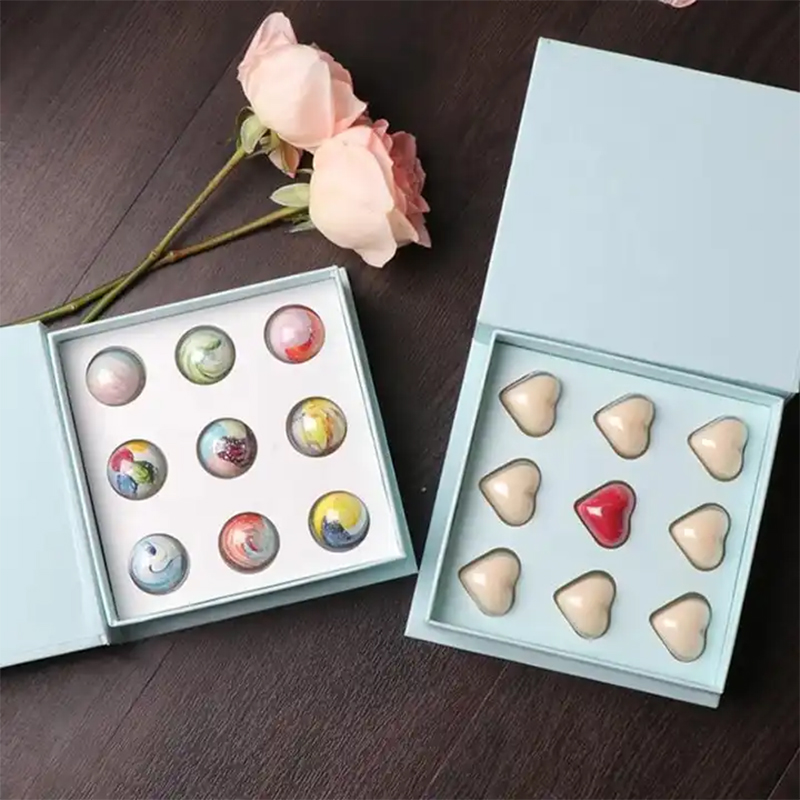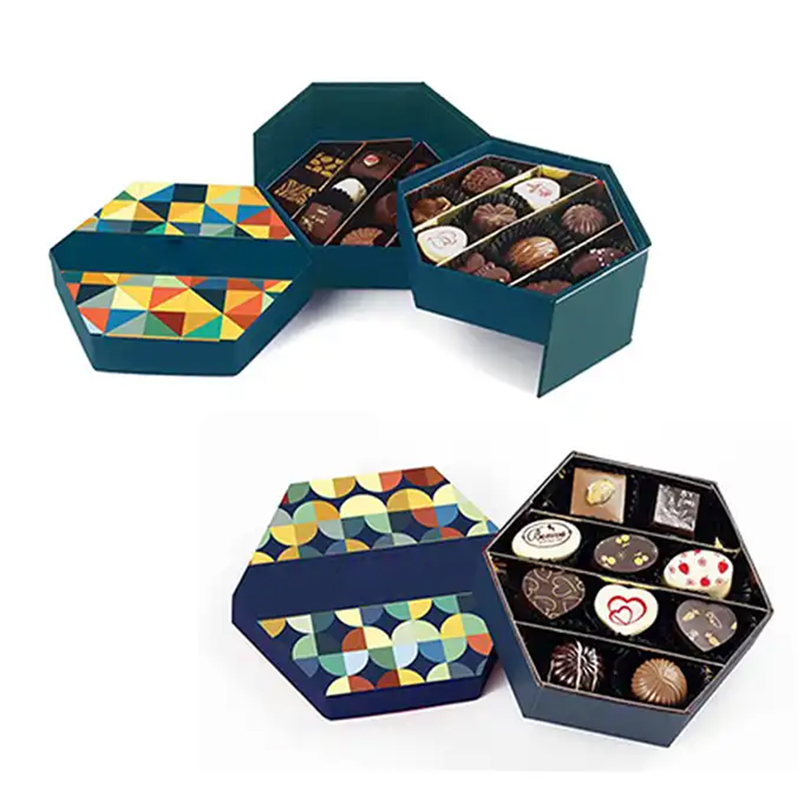- All
- Product Name
- Product Keyword
- Product Model
- Product Summary
- Product Description
- Multi Field Search
Views: 203 Author: XianDa Publish Time: 2025-02-04 Origin: Site

Content Menu
● Understanding the World's Finest Chocolate Box
● The Composition of a World's Finest Chocolate Box
● The Chocolate Box Factory Process
● Quality Control in Chocolate Production
● The Importance of Sustainability
● Visual Insights into Chocolate Production
● Additional Content Suggestions
Chocolate is one of the most beloved treats globally, and among the many brands available, World's Finest Chocolate stands out for its quality and variety. This article will explore how many bars come in a box of World's Finest Chocolate, delve into the chocolate box factory processes, and answer some frequently asked questions related to this delightful confectionery.
A standard box of World's Finest Chocolate typically contains 60 assorted chocolate bars. These bars come in various flavors, catering to diverse taste preferences. The assortment generally includes:
12 Caramel Bars: Creamy caramel wrapped in rich milk chocolate.
12 Milk Chocolate with Almonds Bars: Roasted almonds enrobed in smooth milk chocolate.
12 Crisp Bars: A crunchy chocolate experience.
12 Wafer Bars: Light, crunchy wafers layered with smooth chocolate.
6 Milk Chocolate Bars: Classic milk chocolate for traditionalists.
6 Dark Chocolate Bars: Rich dark chocolate for those who prefer a deeper flavor profile.
This variety not only makes it a popular choice for individual enjoyment but also serves as an excellent fundraising tool for schools and organizations.
The journey of creating a box of World's Finest Chocolate begins at the chocolate box factory, where a meticulous manufacturing process unfolds. Below are the primary stages involved in chocolate production:
The process starts with the pretreatment of raw materials such as cocoa beans, sugar, and dairy products. Cocoa beans must be roasted to enhance their flavor, while sugar is ground to achieve a uniform fineness. The quality of these raw materials significantly affects the final product.
Once the raw materials are prepared, they are measured and mixed according to specific recipes. This stage ensures that each batch of chocolate maintains consistent quality and taste. The precise ratios of cocoa solids, cocoa butter, sugar, and milk powder are crucial for achieving the desired flavor profile.


The mixed ingredients undergo fine grinding to achieve a smooth texture. This step is crucial as it impacts the final mouthfeel of the chocolate. Modern factories use high-shear mixers and conching machines to refine the chocolate further.
Conching involves continuous mixing and aerating of the chocolate mixture. This process helps develop the flavor and texture, making it smoother and more palatable. The duration of conching can vary; longer conching times typically result in more refined flavors.
Tempering is a critical step where the melted chocolate is cooled and reheated to stabilize cocoa butter crystals. This process gives the chocolate its glossy finish and snap when broken. Proper tempering is essential for ensuring that chocolates have a good shelf life without blooming (the white powdery appearance that can form on improperly tempered chocolate).
After tempering, the liquid chocolate is poured into molds to form bars or other shapes. The molds are then vibrated to eliminate air bubbles before being cooled to solidify the chocolate. Various shapes can be created depending on market demands and seasonal offerings.
Finally, once cooled, the chocolates are packaged using automated machines that ensure each piece is wrapped securely for freshness and presentation. Packaging design plays an essential role in marketing; eye-catching designs can attract consumers' attention on store shelves.
Quality control is integral throughout the manufacturing process at a chocolate box factory. Regular testing ensures that each batch meets established standards for taste, texture, appearance, and safety:
Taste Tests: Trained panels often conduct blind taste tests to evaluate flavor profiles.
Visual Inspections: Chocolates are inspected for uniformity in size and appearance.
Chemical Analysis: Samples may undergo laboratory tests to check for contaminants or deviations from quality standards.
In recent years, sustainability has become increasingly important in chocolate production. Many brands, including World's Finest Chocolate, are focusing on ethical sourcing practices:
Fair Trade Practices: Ensuring that cocoa farmers receive fair wages helps support local economies.
Sustainable Farming: Implementing eco-friendly farming practices reduces environmental impact.
Traceability: Brands are striving for transparency in their supply chains so consumers know where their chocolate comes from.
To better understand this fascinating process, consider watching videos that illustrate how chocolate is made in factories:
How Chocolate is Made in a Factory: This video provides an engaging overview of the entire chocolate-making process from cacao farms to finished products.
Chocolate Factory
Image Caption: Inside a modern chocolate factory showcasing various production stages.


Chocolate's History: Did you know that chocolate has been enjoyed for over 3,000 years? The ancient Mesoamericans used cacao beans as currency and made ceremonial drinks from them.
Health Benefits: Dark chocolate contains antioxidants known as flavonoids, which can benefit heart health when consumed in moderation.
World's Largest Chocolate Bar: The largest chocolate bar ever made weighed over 12,770 pounds! It was created in Armenia in 2018.
Chocolate Consumption: Switzerland has one of the highest per capita consumptions of chocolate globally, with each citizen consuming around 19 pounds per year!
Chocolate Festivals: Various cities around the world host annual chocolate festivals celebrating this sweet treat with tastings, workshops, and competitions.
How many bars are in a box of World's Finest Chocolate?
A standard box contains 60 assorted bars.
What flavors are included in the World's Finest Chocolate assortment?
The assortment typically includes Caramel, Milk Chocolate with Almonds, Crisp, Wafer, Milk Chocolate, and Dark Chocolate.
Is World's Finest Chocolate suitable for fundraising?
Yes, it is widely used for fundraising due to its variety and popularity.
What is the process for making chocolate?
The main stages include raw material preparation, mixing, grinding, conching, tempering, molding, and packaging.
Where can I find World's Finest Chocolate?
It is available through various retailers and online platforms specializing in fundraising products.
World's Finest Chocolate not only offers a delightful assortment of flavors but also represents an intricate manufacturing process that transforms raw ingredients into beloved treats. Whether enjoyed individually or used as part of fundraising efforts, these chocolates bring joy to many.This article has provided insights into how many bars come in a box of World's Finest Chocolate while exploring the fascinating processes behind their production in a chocolate box factory.In summary:
A standard box contains 60 assorted bars.
The production process involves several intricate steps from raw material preparation to packaging.
Quality control ensures each batch meets high standards.
Sustainability efforts are becoming more prominent within the industry.

Chocolate Pairings: Discuss how different types of chocolates pair well with various foods or beverages (e.g., wine pairings with dark chocolates).
Cultural Significance: Explore how different cultures celebrate or incorporate chocolate into their traditions (e.g., hot cocoa during winter holidays).
DIY Projects: Provide simple recipes or projects readers can try at home using World's Finest Chocolate bars (like making s'mores or incorporating them into desserts).
Interviews with Experts: Include insights or quotes from chocolatiers or factory workers about their experiences working with chocolate.
Chocolate Trends: Discuss current trends in the chocolate industry such as vegan chocolates or unique flavor combinations gaining popularity.
content is empty!